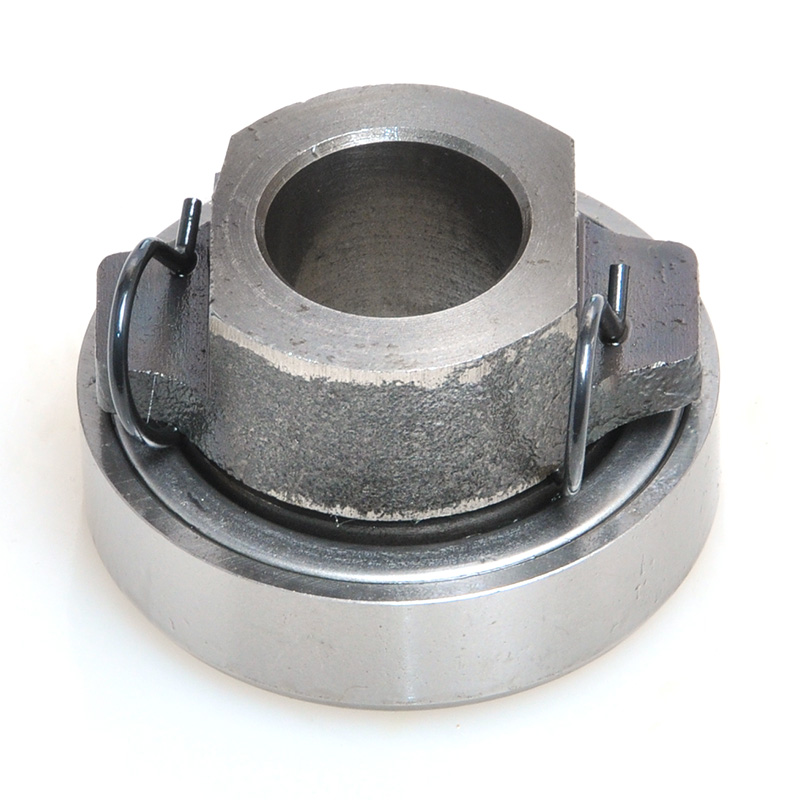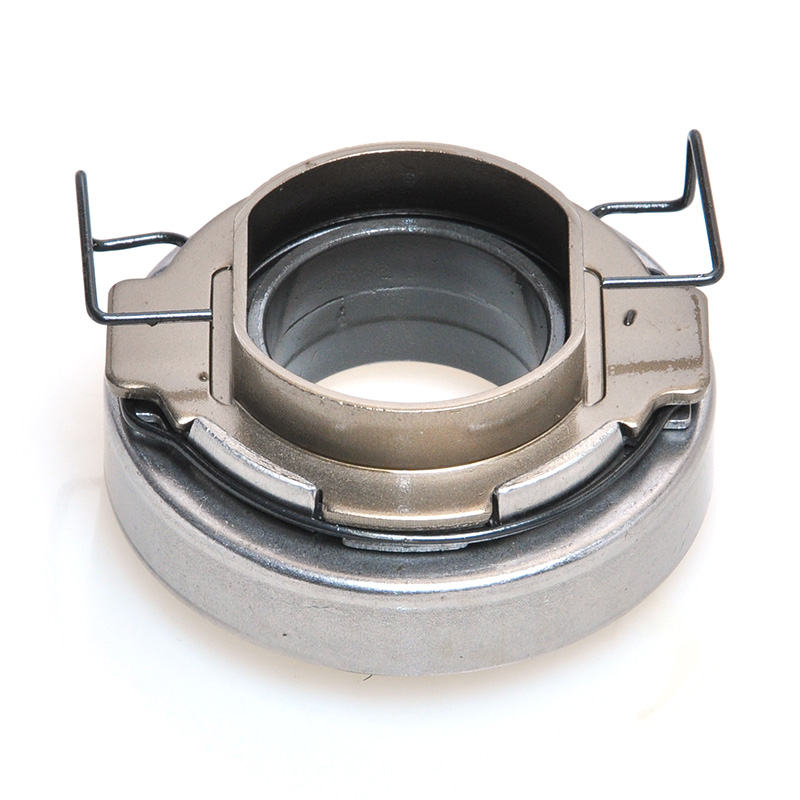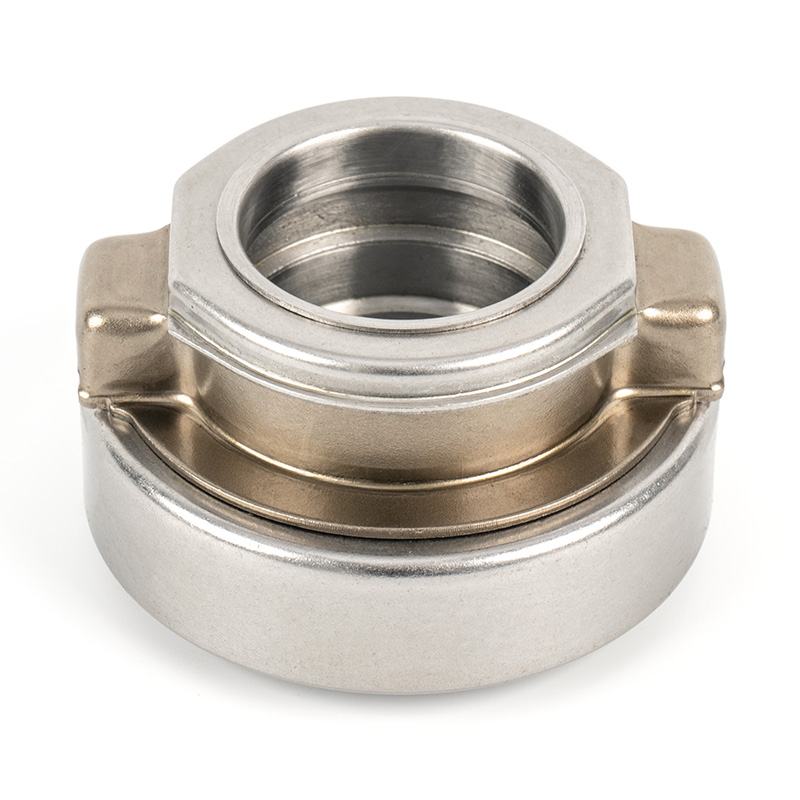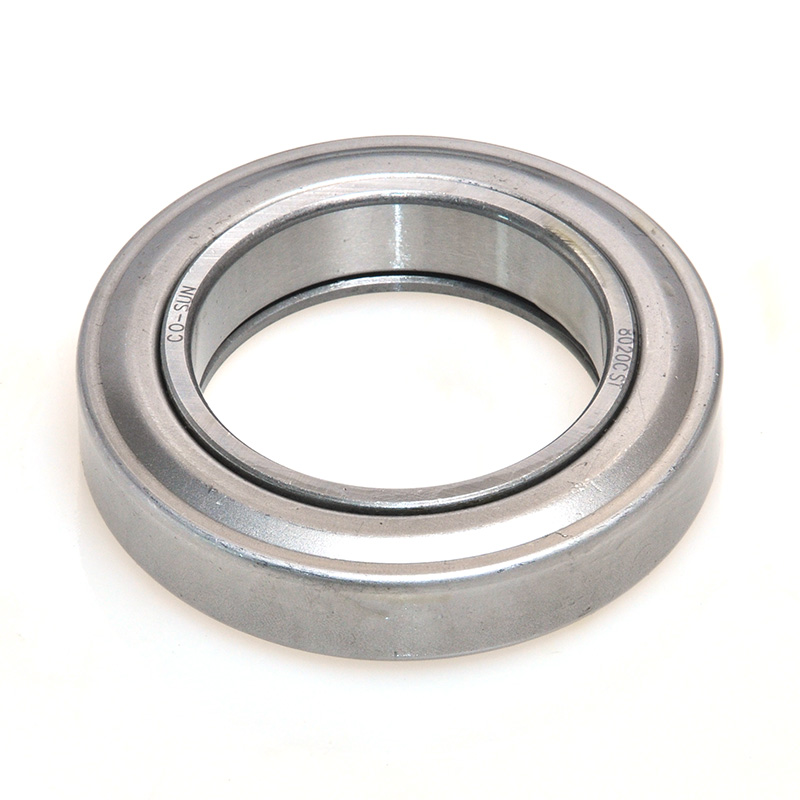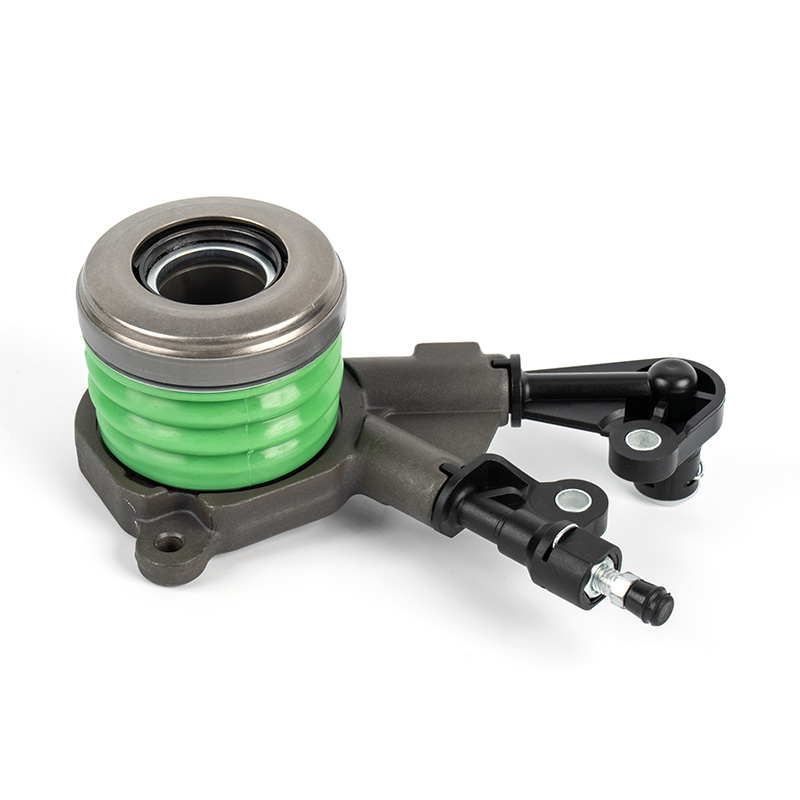What is Hydraulic Clutch Release Bearing?
1.What is Hydraulic Clutch Release Bearing?
The hydraulic clutch release bearing, also referred to as a concentric slave cylinder (CSC), represents a significant evolution in clutch actuation technology. This integrated component consolidates the hydraulic slave cylinder and the clutch release bearing into a single, compact unit mounted concentrically on the transmission's input shaft. Its design eliminates the need for mechanical linkages, such as forks and pivot balls, leading to a more efficient and packaging-friendly system.
2. Basic Function and Operational Principles
The core function of the release bearing is to disengage the clutch, interrupting power flow from the engine to the gearbox to allow for gear changes. In a hydraulic system, this is achieved through a closed fluid circuit.
Actuation Sequence:
The driver depresses the clutch pedal, actuating the clutch master cylinder.
The master cylinder piston displaces hydraulic fluid (typically brake fluid), creating pressure within the system.
This pressurized fluid travels through a hydraulic line to the inlet port of the hydraulic clutch release bearing.
The hydraulic pressure acts upon a piston within the bearing assembly.
The piston extends, transmitting force directly onto the fingers of the clutch diaphragm spring or the pressure plate levers.
This action moves the pressure plate away from the clutch disc, disengaging the clutch.
Upon release of the clutch pedal, the hydraulic pressure drops. The retraction of the piston is facilitated by the return force of the diaphragm spring and, in some designs, by an internal spring within the bearing assembly itself.
Hydraulic Dynamics: The system operates on fundamental hydraulic principles. The force applied at the pedal is multiplied by the ratio of the master cylinder's cross-sectional area to the release bearing piston's area. The incompressibility of the hydraulic fluid ensures immediate and precise force transmission. Fluid viscosity, line diameter, and circuit length can marginally affect response time, but these are optimized in vehicle design.
3. Applications and System Comparisons
Applications: This design is ubiquitous in modern vehicles, particularly those with:
Transversely mounted engines and transaxles (common in front-wheel-drive vehicles), where space for a clutch fork is severely limited.
Rear-wheel-drive vehicles with tightly packaged drivelines.
High-performance applications where precise and consistent clutch engagement is critical.
Comparison with Mechanical Systems:
Advantages of Hydraulic Systems:
Self-Adjustment: Automatically compensates for clutch disc wear, maintaining consistent pedal feel.
Packaging Efficiency: More compact, ideal for modern engine bays.
Smoother Engagement: Hydraulic fluid dampens vibrations and shocks.
Lower Pedal Effort: Provides mechanical advantage through hydraulic leverage.
Flexible Routing: Hydraulic lines can be routed around obstacles more easily than a rigid mechanical linkage.
Disadvantages of Hydraulic Systems:
Complexity: More components (master cylinder, slave cylinder, lines, fluid) can lead to more potential failure points.
Susceptibility to Air and Contamination: Performance is highly dependent on system integrity and fluid quality.
Diagnosis and Repair: Bleeding and diagnosis can be more procedure-intensive than adjusting a cable.
4. Design, Materials, and Manufacturing
Bearing Core: The heart of the unit is a high-precision, single-use angular contact ball bearing. It is designed to withstand high thrust loads from the diaphragm spring but is not designed for continuous rotation under load. It is typically manufactured from case-hardened steel for durability.
Housing: The body that contains the hydraulic piston is commonly made from aluminum (for its heat dissipation properties and strength) or high-temperature thermoplastics (for cost and weight reduction).
Piston and Seals: The piston is usually made from steel or aluminum. The most critical components are the seals, which are almost exclusively made from Nitrile (Buna-N) or, in higher-performance applications, Fluorocarbon (Viton) rubber compounds to withstand the combination of hydraulic fluid, high temperatures, and pressure.
Manufacturing Process: Involves precision machining of metal components, high-quality bearing manufacturing, and stringent assembly processes conducted in clean-room environments to prevent contaminant inclusion, which is a primary cause of seal failure.
5. Failure Symptoms and Diagnostic Analysis
Soft/Spongy Pedal or Pedal Falls to Floor: This is the classic symptom of air within the hydraulic circuit. Air is compressible, unlike hydraulic fluid, leading to a loss of firm pedal feel.
Difficulty Shifting Gears / Grinding Gears: This indicates incomplete clutch disengagement (clutch drag). Causes include:
Low fluid level due to a leak.
Air in the system.
A failing release bearing not extending fully.
Mechanical damage to the bearing or clutch components.
Fluid Leaks: Visible fluid on the bottom of the transmission bell housing or a falling fluid level in the master cylinder reservoir indicate a leak from the release bearing's seals, its connection point, or the hydraulic line.
Unusual Noises:
Squealing or Chirping when the clutch pedal is depressed often points directly to a worn-out release bearing. The noise is generated by the dry, damaged bearing balls or rollers.
A constant whirring that disappears when the clutch is depressed may indicate a faulty pilot bearing in the engine flywheel, which is often misdiagnosed as a release bearing issue.
High/Pulsating Pedal Effort: This can indicate a seized or binding release bearing, or physical damage to the bearing or its contact points on the pressure plate.
6. In-Depth Analysis of Common Issues
Leakage Problems:
Primary Cause: Seal failure. This can be due to:
Aging and Heat Cycling: Seals lose elasticity and become brittle over time.
Contaminated Fluid: Abrasive particles in the fluid score the piston and seal surfaces.
Improper Installation: Nicks or damage to seals during installation.
Excessive Pressure: Over-enthusiastic "clutch dumping" can cause pressure spikes that damage seals.
Consequence: Loss of hydraulic pressure leads to total failure of clutch disengagement.
Bleeding and Air Intrusion:
Sources of Air: Low reservoir fluid level, loose hydraulic connections, or a failing seal that allows air to be drawn into the system during piston retraction.
Bleeding Procedures: The method is critical. While the "two-person pedal pump and bleed" method is common, many modern systems are best bled using a vacuum bleeder or pressure bleeder to ensure all air is removed from the circuit, which can be complex due to the internal passages of the bearing.
Wear and Lifespan Considerations:
The release bearing is an "on-demand" component; it only rotates and loads when the clutch pedal is depressed. Therefore, its life is heavily influenced by driving habits (e.g., "riding the clutch").
Lifespan is typically aligned with that of the clutch disc and pressure plate. It is standard practice to replace the hydraulic release bearing whenever the clutch is serviced, even if the old bearing appears functional, due to the high labor cost of a subsequent failure.
7. Replacement, Compatibility, and Installation
Replacement: Replacement requires removal of the transmission, making it a labor-intensive job.
Compatibility: It is crucial to match the new bearing to the specific vehicle and clutch system. Parameters include:
Bore Depth and Piston Stroke: Must match the requirements of the pressure plate.
Mounting Type: Slip-on vs. bolt-on designs.
Hydraulic Connection: Thread size and type for the fluid line.
Critical Installation Precautions:
Never depress the piston by hand or with tools once it is unpacked. This can damage the internal seals.
Impeccable Cleanliness: Any dirt introduced during installation can cause immediate seal failure.
Fluide: Use only the recommended, clean, and new hydraulic fluid. Do not mix different types (e.g., DOT 3, DOT 4, DOT 5).
Bleeding: Follow the manufacturer's recommended bleeding procedure meticulously to ensure a firm pedal.
Alignment: The bearing must slide freely onto the transmission input shaft without force. Any binding indicates misalignment or an incorrect part.
8. Frequently Asked Questions (FAQ)
Q: Can a hydraulic clutch release bearing be repaired or rebuilt?
A: No. These are non-serviceable, sealed units. Attempting to disassemble and repair them is not feasible and will lead to guaranteed failure. They are always replaced as a complete assembly.
Q: Why does my new clutch and release bearing still make a noise?
A: Some minimal noise from a new bearing can be normal as it breaks in. However, persistent loud noise often indicates incorrect installation, a defective bearing, or a mismatch between the bearing and the pressure plate (e.g., incorrect contact point).
Q: Is it necessary to replace the master cylinder when replacing the release bearing?
A: It is not always necessary, but it is highly recommended. The master cylinder piston seals are of the same age and material as the failed seals in the release bearing. Failure of the master cylinder shortly after a clutch job is common. Replacing both as a set ensures system integrity.
Q: What causes a release bearing to fail prematurely?
A: Common causes include contamination during installation, improper bleeding leading to excessive piston travel and heat, a misaligned or damaged pressure plate, or a driving habit that involves excessive and unnecessary clutch pedal operation.
9. Conclusion
The hydraulic clutch release bearing is a sophisticated and vital component that offers significant advantages in terms of performance and packaging. Its reliable operation is contingent upon correct installation, the use of clean fluid, and the integrity of its internal seals. A thorough understanding of its function, failure modes, and replacement protocols is essential for diagnosing issues accurately and ensuring a durable and effective repair. Given the labor cost associated with its replacement, proactive maintenance and correct installation procedures are of paramount importance.
 +86-13867573512
+86-13867573512

